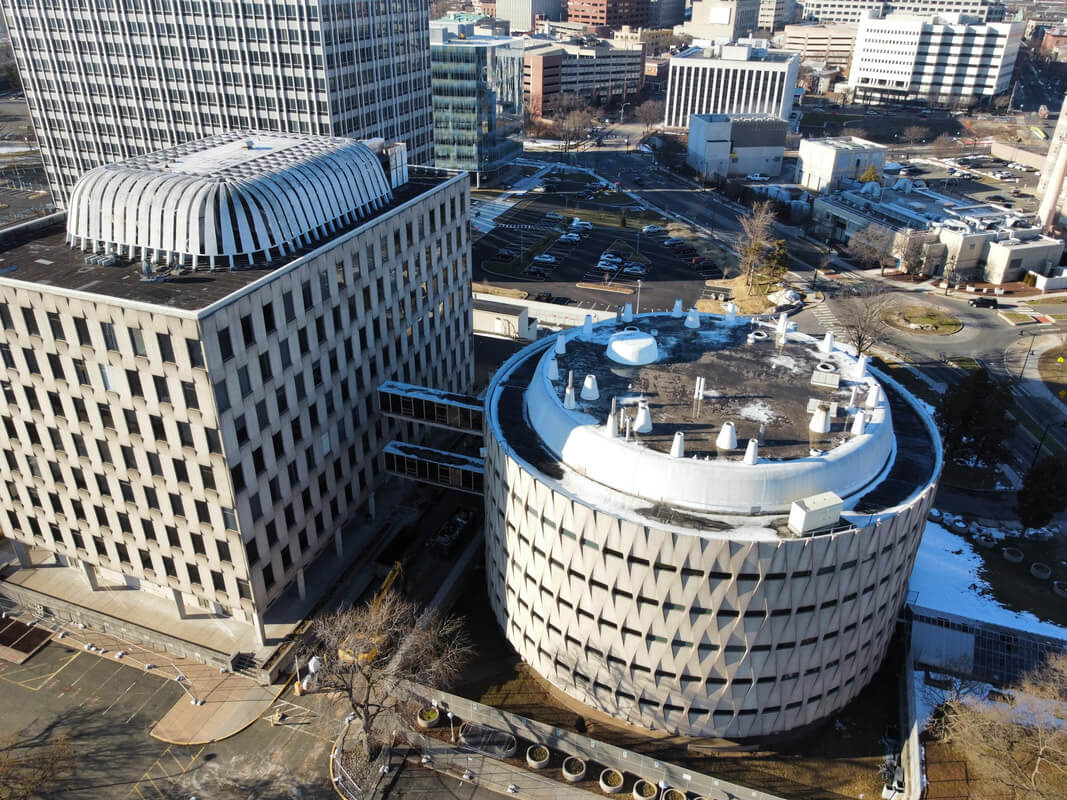The Architect’s Newspaper reports that two “historic Brutalist” buildings in Trenton, N.J. are in the process of being demolished. The early 1960s buildings, which housed offices and labs of the state government, are the work of Alfred and Jane West Clauss, both partners in Clauss & Nolan. The German-born Alfred Clauss (1906-98) worked briefly for Mies on the Barcelona Pavilion and after emigrating to the U.S. he worked for George Howe on the PSFS Building and was one of the Philadelphians whom Howe brought to teach at Yale (Louis Kahn was another). Jane Clauss (1907-2003), born in Minneapolis, worked for Le Corbusier in Paris and met her husband when both were designing wartime housing for the TVA. The Trenton buildings are a cube and a cylinder clad in precast concrete panels. It is not clear what makes them historic. The Antique Automobile Club of America defines an antique car as over 25 years of age, so in that sense perhaps they qualify, and I suppose that like any old building they represent a historical moment. In this case, it was the time when architects turned away from the reductive minimalism of the International Style and began to experiment with facades of modeled concrete. Not exactly Brutalism, this was an awkward blend that even a master like Marcel Breuer could not always pull off. This bland and unappealing architecture failed to capture the public’s affection, which may explain why these buildings frequently fall victim to the wrecker’s ball.


“Historical,” like “healthy, natural and fresh,” has become so misused as to be useless. Virtually every hamlet, town and city in this country has a nominally historic center which the tourist is encouraged to visit, regardless of any historical significance actually associated with the locale. That some architecture enthusiasts should choose to call the Trenton buildings “historical” says no more at this point than to call them “lite and tasty.” The word they’re looking for is “old.” Age, weather and neglect come for us all, but it seems to have been especially hard on these mcm buildings with cast concrete elements. Mostly custom-cast and irreplaceable, these elements may determine when a building has reached the end of its usable life. For many of these buildings their time has now come, which is why their preservation has become an issue.
And there’s no faulting the enthusiasts who want to save them. Many buildings of actual historic significance have been saved by the work of enthusiasts. Mt.Vernon and Monticello spring to mind. But who will pay the considerable price that it will take in this case? This genre has been lumped together with French Brutalism on emotional, not stylistic grounds. They just seem brutal. Pretty generally unloved buildings, with ham-handed detailing, often scaled over-large and repetitive. (Though the Trenton pair was rather attractive, if the photo is any evidence.)